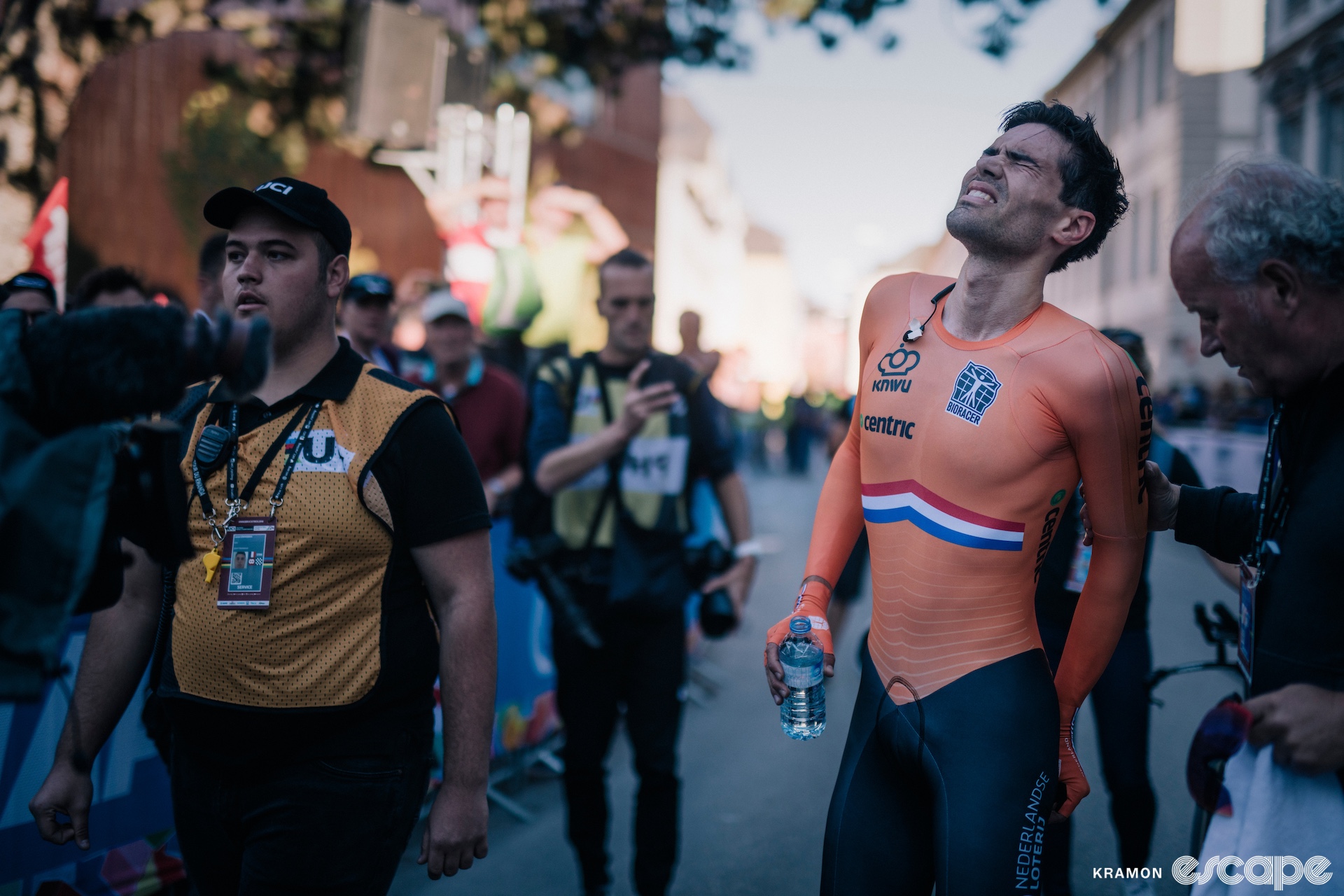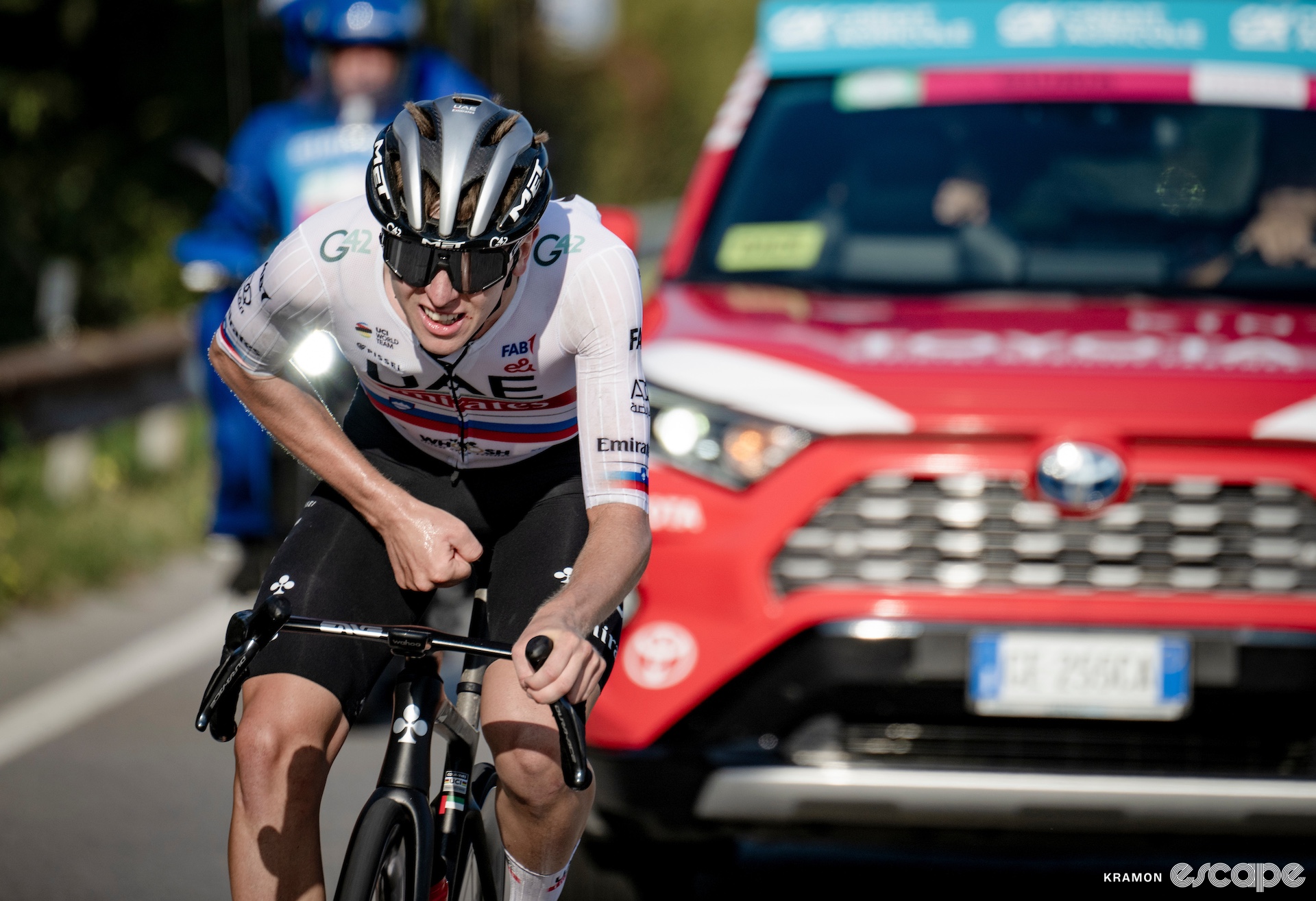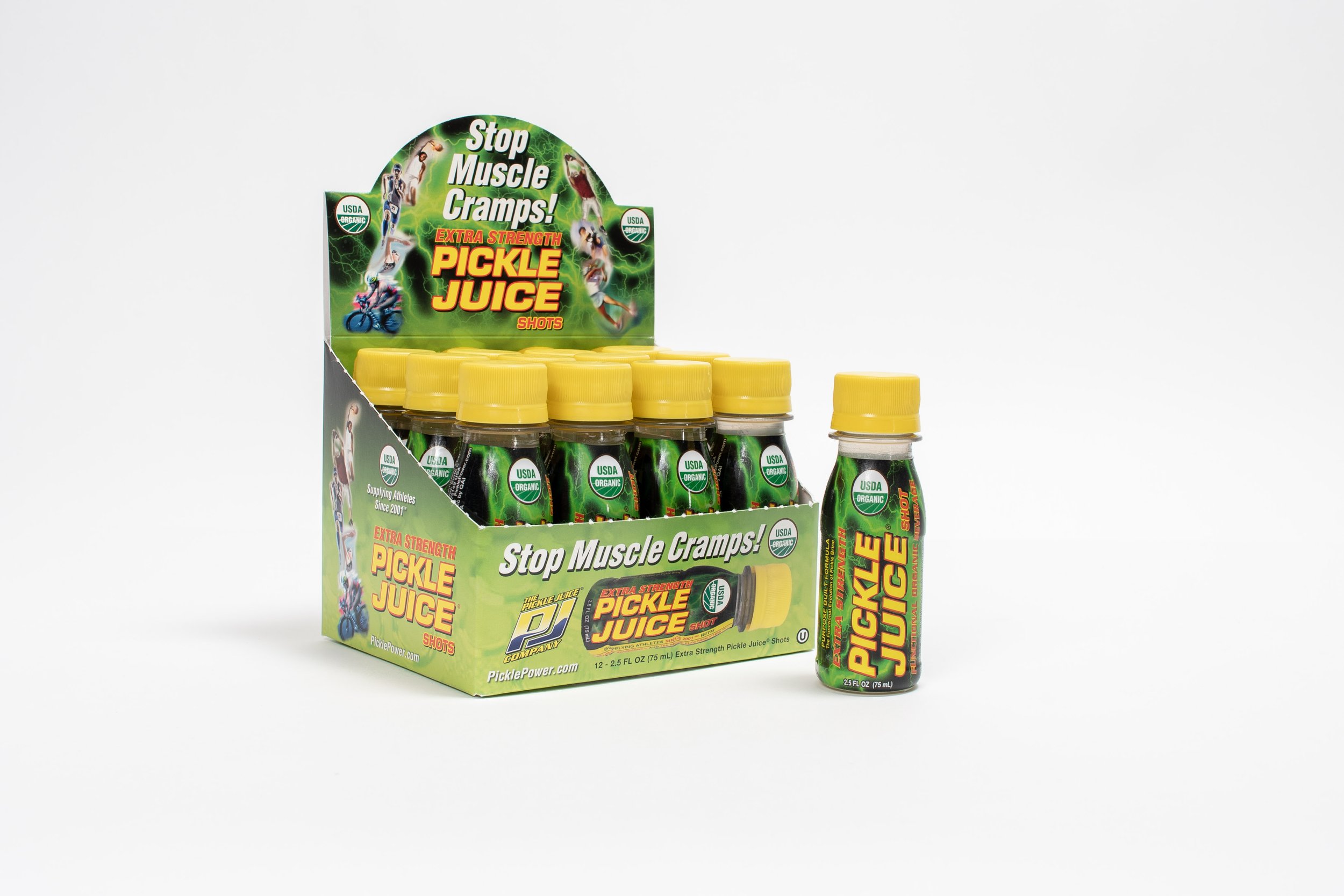I first wrote about nutrition and muscle cramps back at CyclingTips in 2011. At that time there were two main theories for muscle cramping. First, the idea that it was linked with hydration and electrolytes, especially sodium (salt tablets), potassium (bananas anyone?), and magnesium supplements. And then, in the late 1990s, a new theory emerged that cramps were an issue of ‘neuromuscular fatigue’. This theory was based on observations that those who were going harder and for longer than they were accustomed to in training were those most likely to cramp. It was described as a conditioning issue – simply train longer and harder, don’t get too ambitious with your pacing on race day, and you’ll be fine.
The thesis of my article was that the research evidence at the time leaned toward support for the neuromuscular fatigue hypothesis, whereas the evidence for hydration and electrolytes was flimsy at best, despite substantial product marketing to the contrary.
Looking back, the comments for that article were somewhat predictable. “Of course it’s electrolytes, this guy’s got no idea what he’s talking about.” “He might be a scientist, but has he ever actually ridden a bike?” To be fair, the neuromuscular fatigue hypothesis did have its supporters too, but they were in the minority. But 13 years on, athletes are still struggling with cramping. If either of these hypotheses were a complete explanation, then the solution would be so obvious that everyone would be doing it. There would be no debate, and no cramping.
But that’s not what happened. For every cyclist who ‘cured’ their cramps through changes in hydration and electrolyte practices, there’s one who found it made no difference at all. For every rider who trained harder and longer than ever before and stopped cramping, there’s a rider who still cramps on race day, no matter what they do in training. So what’s going on? How is it that we still know so little about something so common? And in the 13 years since that article, what have we learned?

Firstly, it’s important to understand that studying muscle cramps in athletes is extremely difficult. You can’t bring someone into the lab and ask them to cramp on command. The unpredictability makes it a nightmare to research authentically in a laboratory setting. Instead, scientific evidence around cramping comes mostly from two different types of research, neither of them ideal but at this stage the best we have:
- Observational studies: Researchers attend a race (often an Ironman triathlon or ultramarathon event), collecting data from race entrants be it from questionnaires, weigh-ins before and after the race to assess fluid balance, or providing a blood sample to look at electrolyte concentrations or other markers.
- Electrically stimulated cramping models: In this approach, researchers place electrodes over a nerve that stimulates contractions of a small muscle group of the athlete, providing an electrical stimulus to the nerve to force an involuntary contraction. The less stimulus required before the muscle starts cramping, the more susceptible the person is to muscle cramps during exercise. As artificial as this sounds, and it is, there is evidence that this approach does correlate well with those who are more prone to exercise-induced cramps in the real world.
In addition to this, funding for research on cramping just isn’t an attractive proposition, so there’s not exactly a huge pile of fresh evidence to pick through.
From the small number of studies that continue to be undertaken (mostly with extremely limited funding), several potential risk factors for cramping have been identified. Their diversity, from the use of prescription medications, to pacing strategy, to temperature, to pain and prior muscle damage, have now led experts in the field to propose that cramping is most likely a complex syndrome that doesn’t follow a one-size-fits-all principle.
In 2021 a new model to explain cramping was developed and published by Professor Kevin Miller (Texas State University), a highly respected figure in the field, along with colleagues that include Professor Martin Schwellnus, the original proponent of the neuromuscular fatigue theory back in the 1990s and 2000s. The new multifactorial model further challenges our understanding of cramping, and brings together previously opposing theories, showing how they could potentially both be a small part of a much larger picture.

The new model of cramping
The model devised by Prof. Miller and colleagues is centred around two main pathways:
- changes to the functioning of the central nervous system (CNS), the brain and spinal cord, and
- feedback to the CNS from the muscle itself.
The CNS and cramping
Cramping is not just a muscular issue. The functioning of our CNS plays a crucial role. Some athletes may be genetically predisposed to cramps, while others may find their cramps associated with medical conditions, medication use, or other external factors that influence the ‘excitability’ of the CNS. These factors can be broadly thought of as different forms of ‘stress’ that can occur during exercise (above and beyond the normal and expected response to exercise), and could include abnormally high or low body temperature, increased exercise intensity (especially over a prolonged period of time), and significant disturbances in hydration (both under and overhydration).
But other forms of stress are relevant too. Psychological stress (i.e. race day anxiety) is an area less explored in cramping research to date (Prof. Miller is keen to explore this), but may be one key differentiating factor that helps explain why most athletes rarely cramp in training no matter how hard they push themselves, but then encounter issues in the cut and thrust of competition. Lack of sleep prior to competition may play a role too. A large, sudden stress response, such as the adrenaline surge that occurs when a rider crashes or has a near-miss, may also exacerbate this response.
While medications and some chronic health conditions may also increase CNS excitability, stimulants (e.g. high doses of caffeine, and/or prescription medications for ADHD) have been suggested as a particularly important pharmacological factor.
Muscle feedback and cramping
The other aspect to cramping is thought to be the feedback sent to the CNS from the working muscles themselves. Parts of this mechanism formed the basis of Prof. Schwellnus’ neuromuscular fatigue hypothesis. Our muscles contain components that increase or reduce their excitability (how easily a contraction can be stimulated by the CNS). These components in turn can be influenced by the muscle’s internal state. In particular, increased muscle temperature (due to the amount of energy being produced), pain signals from injury or accumulated muscle damage, muscle fatigue, and repeated muscle contractions in the muscle’s shortened position are all believed to alter the interaction between that muscle and the CNS.
Whilst muscles contracting in the shortened position can relate to biomechanical factors like pedal technique or bike fit, the muscle fatigue component in particular ties in with nutrition. Both inadequate conditioning and inadequate fuelling can lead to premature muscle fatigue, potentially leading to a higher chance of cramping.

So, what about hydration and electrolytes?
Traditionally, and to this day in product marketing, dehydration and lack of sodium were considered primary causes for cramping. While the latest research does not fully support this view, one study from Professor Ken Nosaka at Edith Cowan University in Perth does highlight a potential role. Suddenly dropping blood sodium concentration, typically through first becoming dehydrated and then suddenly guzzling a large volume of plain water quickly, can cause a rapid influx of water from the outside to the inside of our body’s cells, expanding their volume.
Whilst this drinking behaviour has been identified as a possible risk factor for cramping, the reason why remains unclear. What is clear though is that this phenomenon is just one of several factors that impact cramping risk, and should not be thought of as the sole cause (or solution).
And what about potassium or magnesium? There was virtually no supportive research on the topic in 2011, and nothing’s changed since.
Cramping risk factors – like a house of cards
As well as pulling together previously conflicting theories about cramping, the new model by Prof. Miller and colleagues describes what athletes very clearly learn from experience. Often one risk factor on its own makes little difference in terms of cramping risk. But as these factors accumulate over hours of racing, they eventually reach a threshold where the CNS control of muscle contraction is altered, and those muscles that are most susceptible (i.e. those that have been working hardest) begin the painful, involuntary muscle contractions that we recognise as cramping.
Often, athletes can adjust their pace/power output to sit just below this threshold, but once the cramping has started, the risk of further muscle cramps (including other muscles that haven’t yet cramped) increases significantly.
So how do I prevent cramping?
Clearly prevention is going to be better than cure when it comes to cramping. But with so many potential risk factors, and no systematic way of testing each one individually (removing a single factor at a time in a scientific fashion doesn’t work for problems that are caused by the accumulation of multiple risk factors), the only way you can hope to minimise your cramping risk is to control for as many of these factors as possible, simultaneously.
Understand your hydration needs. Do those longer and harder efforts in training. Look at how to manage stress on race day. Get professional help to optimise your bike fit and pedal technique. Heat acclimate for races held in hot weather. Adequately fuel your training and racing. And avoid unnecessary medication and/or supplement use, including high doses of caffeine.
What if I’m in a race and I start cramping?
The number one remedy for cramping once it begins remains to stretch the affected muscle/s. Stretching activates the components inside the muscle that reduce its excitability to contract, lowering the risk that an overactive CNS will trigger a cramping episode. This solution however is usually temporary, and once the exercise resumes, if the pace is not moderated, the cramping can come back within minutes.
Pickle juice and chillis – magic remedies?
Ingredients like pickle juice, vinegar, salt, chillis, and ginger, have been touted as quick fixes for cramping, supposedly relieving cramping by activating receptors in the mouth that feedback to the CNS. While they may provide temporary relief in some people (pickle juice appears to have the best supporting evidence to date), they don’t appear to be a one-size-fits-all solution that solves cramping in everyone. They also fail to address the underlying causes of cramps and should therefore be seen as temporary relief at best.
Another factor pointed out by Prof. Miller, who has done much of the pickle juice research himself, is that there may be important differences between the commercial pickle juice products (replicas where the product you consume has never touched a cucumber) and the actual brine taken from jars of pickles. The amount of key ingredients, in particular the vinegar, is generally lower in the commercial replica products, and most of the promising research on pickle juice was done using the genuine article.

Cramping is individualistic
Much like gut issues, there’s no universal solution to cramping. The triggers and causes can vary significantly between individuals, and I must emphasise here that the latest model of cramping is still very much a theoretical model, not a statement of fact. Athletes need to observe their own body, training, diet, and stressors, to find what specifically contributes to their cramping.
A questionnaire included in Prof. Miller’s paper may be useful in identifying your own personal risk factors, but as mentioned before, altering one thing at a time is unlikely to help you with a phenomenon that appears to result from many different factors occurring at the same time.
Cramping, frustrating as it may be, is a complex interplay between the CNS, muscle feedback, and external factors. It’s no longer a case of being on Team Electrolyte or Team Fatigue – we now understand that both viewpoints (and the solutions tailored to them) are far too simplistic, which is why for a lot of people they simply don’t work. Seeing cramping as a complex syndrome with multiple risk factors that can be additive, and trying to control as many of the controllables as possible, may provide a better path forward.
About the author
Alan is an accredited sports dietitian, researcher, podcaster, and practitioner in the field of endurance sports nutrition. He works with endurance athletes of all levels, from complete beginners to professional and Olympic athletes, and has previously worked with UCI Continental teams, and athletes from Triathlon Australia’s High-Performance Program in the lead up to the Tokyo Olympics and Paralympics.
Alan consults through his own business Next Level Nutrition, training-based nutrition coaching app Fuelin, and is the founder and co-host of the Fueling Endurance podcast. Alan started contributing to CyclingTips back in 2011, and was a proud founding member of Escape Collective.
Did we do a good job with this story?

